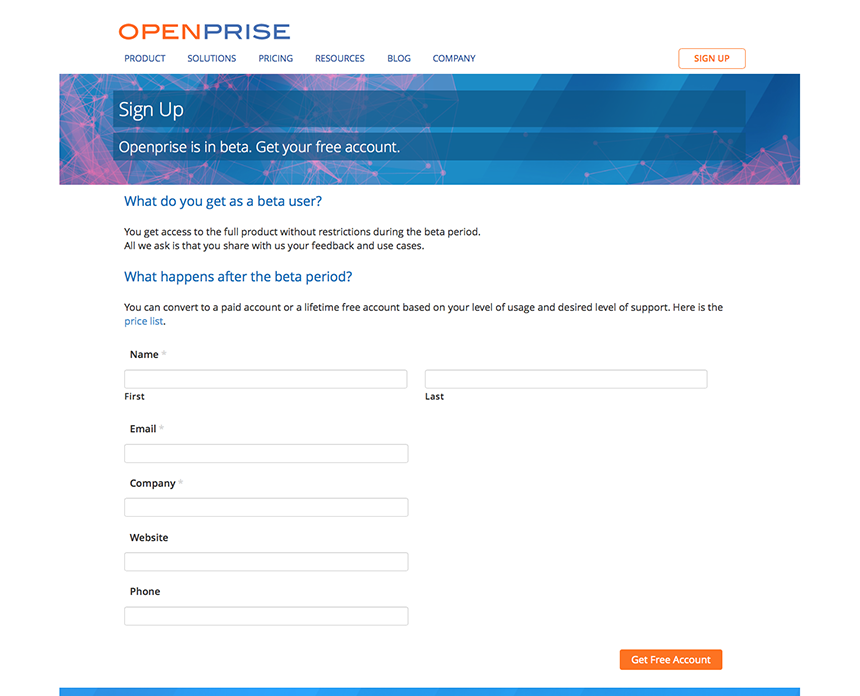
Long vs. short signup form? The debate is over
The other day, I was listening to a customer’s requirements for real-time lead routing from web signup forms using the Openprise API. That led to the discussion of how to improve the conversion rate on their various landing pages, which is currently around 3%. One theory for why the conversation rate is low is that their lead forms are too long and have too many required fields. For reference, their forms have a range of 8 to 10 fields, most of which are mandatory. This leads to an age-old debate for marketers. Do I:
1) Ask for more data to get fewer but higher quality leads, or
2) Ask for less data to get more but incomplete leads
I used to subscribe to school of thought #1, but now I firmly believe #2 is the right approach. This is due to the widespread availability of new data automation and marketing automation technologies.
When Less Was More
Three to six years ago, when I ran marketing, I believed the right approach to lead data collection was less-is-more, or more precisely less-but-higher-quality-is-more. This was simply due to constrained resources. We had neither the bandwidth nor the budget for lead data collection or aggregation, let alone data cleansing. To this day, there is still no quicker way to get a sales guy to throw his computer out the window in frustration than to give him low quality leads to qualify. If you wanted to improve on poor lead data, you either did it manually or hired a data vendor like Jigsaw (before Salesforce bought it) or Bombora. It was expensive, slow, impossible to scale, and frankly the output quality often couldn’t justify the investment. We were better off doing a good job chasing after fewer high quality leads.
This philosophy carried over to the web signup form as well. Using a longer lead form served two purposes: get the information desired and let the prospects self-qualify. The logic was that serious prospects are not deterred by a long form, and window shoppers matter less. That logic is of course flawed. It is largely true for late stage prospects, but certainly not for early stage prospect. The prospects in information gathering mode often do so incognito, until they are ready to engage. This realization brought in the idea of incremental profiling, when you ask for a few pieces of information up front, then get more as the prospect continues to engage. A great tool, yet in practice, it can be difficult to figure out when it is too soon to ask for more. How much personal information can you ask for on a second date? On a third date?
Now More Is Just More
In the last few years, marketing and data automation technologies have made tremendous progress. Quality of data from data vendors is much better, correlation technology has improved, and data automation technologies like Openprise are affordable and accessible to non-technical users. With the ability to enhance data quality continuously and in real-time, you must ask the question: Why not grab any lead you are able to get? If the data is incomplete, you may be able to make it more complete using technology that can scale. Lead data that is still too incomplete to be meaningful can be ignored it until it becomes meaningful.
There are more than a few ways to enhance the lead data you already have, even without validating the data against a third-party commercial database:
- Create job level and job function segmentation from job title data
- Infer missing data from known data relationships, e.g. infer country = US if state = California
- Extract name and company name from email address and URL
- Derive missing or bad email address using name and company information
- Infer geographical location and company information from IP address
Add to this equation cheap storage, advanced search technology, and easy-to-use business rules. There is very little downside to encourage signup, even with the most minimal information.
The long vs. short lead form debate is over. Any data can be turned into more and better data over time, whereas no data is just no data.

Leave a comment